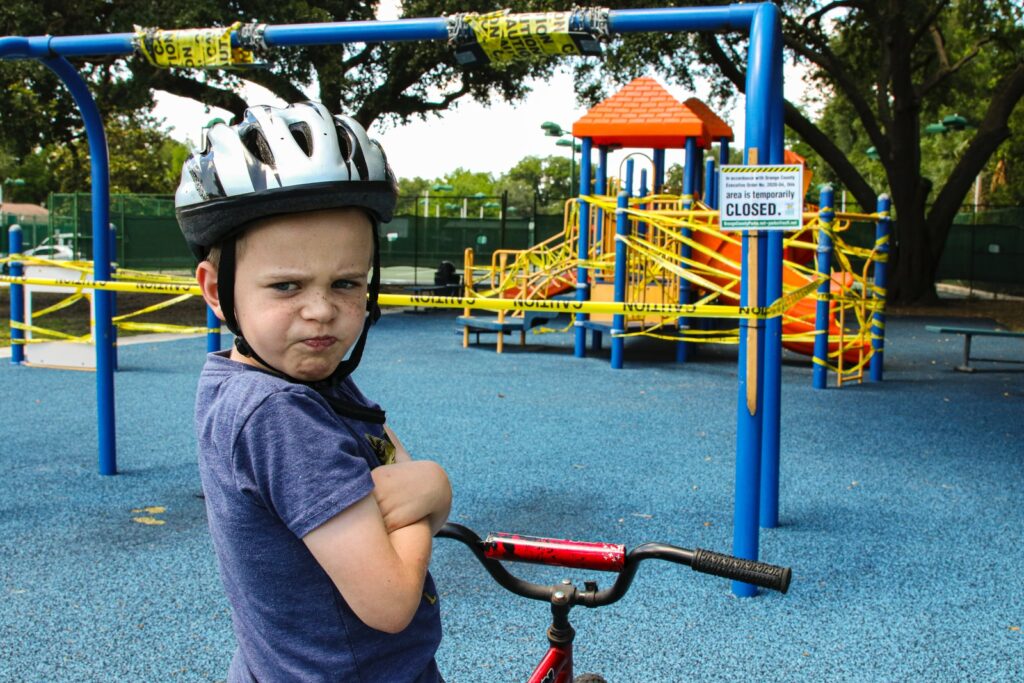I have read a lot of different books on positive parenting and connection based parenting. I will summarize all the main principles from these parenting techniques here.
Positive Parenting
One of the basic principles in positive parenting is that you reinforce the positive things your child does and ignore the bad thing they do. For example, if your child is playing nicely, you notice that and compliment them or praise them or pay attention to them. Children like attention. They will do anything to get your attention. So give them attention when they are doing good things. Whatever behavior you give attention to will grow and whatever you ignore will shrink.
If your child is doing something bad that is just annoying or harmless, ignore it. This will lessen the likelihood that they will do it again because they didn’t get your attention.
If your child is doing something bad that is harmful or destructive, calmly redirect them towards something good. When they are doing the good thing, then reinforce that with praise and attention.
With this method, you can still discipline your children. You don’t want them to hurt other children. But your focus is on everything that they are doing right. You give the most attention to the good things they do.
Positive parenting is fun because it trains your brain to look for the good in your child. It makes parenting more fun because you are noticing and praising all the good things your child does instead of getting overly mad about the bad things.
Positive parenting techniques work well on spouses too! Think if you just complimented your spouse on all the good things they did and ignored the bad things. It makes for a great marriage! Occasionally you talk about your big problems or concerns, but for the most part you are focused on all the good things that your spouse does.
Connection Based Parenting
Connection based parenting comes from the work of Dr. Dan Siegel, Deborah Macnamara, Tina Bryson, and others. The main principle of connection based parenting is that you develop such a close, healthy relationship with your child that they naturally want to do what you say and follow your counsel. However, you still allow them to be who they want to be. You just have a close, loving relationship with them and allow them to make their own choices and be their own person.
Deep respect for the child
Another principle of connection based parenting is allowing the child autonomy to feel however they want or need to feel. In this technique, you have a deep respect for the child and their world. Having respect for how the child feels fosters confidence in the child because then their thoughts and feelings matter.
For example, if your child is upset, many parents would say “stop crying or go to your room!” With connection based parenting, you would just sit with the child and their emotions. You would identify their emotions: “You feel sad. You feel upset. It’s okay to feel upset.” (See how I am validating the child’s feelings not shaming them for feeling upset.) When the child calms down, then you can talk about it.
Only Teach when your child is calm
An important concept of this parenting method is that your child will only learn from you when they are calm. Dr. Dan Siegel calls this “in the green zone.” When your child is upset, they are in the red zone. It is VERY hard to learn anything when you are really upset, so don’t even try to teach when your child is upset. First, you need to soothe them back to the green zone, or a calm state.
Teaching Regulation
Teaching a child to regulate themselves is key to this parenting method. You focus on teaching your child to calm themselves down when they are upset. You also teach them to name and understand their emotions. They don’t need to be afraid of big emotions. Emotions are perfectly natural.
For many parents, we weren’t taught how to regulate ourselves. I had to learn as an adult how to regulate my emotions. Here are some tips for regulation.
- Name the emotion. Being able to name the emotion and identify it helps you to have control over it.
- Try to describe how it feels in your body.
- Take deep breaths and relax into the emotion.
- Realize that all emotions come from our thoughts. So notice the thoughts that you were thinking that caused the negative emotion.
Usually emotions only last for a few minutes. If you can teach yourself to just FEEL the really negative emotions instead of reacting to them or trying to avoid them, you will gain so much control over your life!

The child is ALWAYS doing their best
Another principle from this technique is that the child is always doing their best. If they are misbehaving, it is because they don’t have the skills yet to handle the situation. So instead of getting mad, ask yourself: “What skill does my child need to learn to be able to handle this?” Then go to work on patiently teaching them when they are in the green zone.
This mentality has helped me a lot because then I do not get mad at my children. I look on them with compassion. The thought that “they are doing the best they can” helps me to look on the situation with curiosity and kindness. (Note: I think that adults are the same way. I think that most adults are doing the best they can. They just don’t have the skills to deal with their anger or frustration in a healthy way.)
Connect with your child, then Direct
A good rule is to always connect with your child before you try to direct or teach them. If one of your children hit the other one, connect and calm the injured child. Then try to sit with the angry child and help them calm themselves. Validate their emotions and how they are feeling. Then talk about more appropriate ways to deal with anger.
An example
My son likes to dump things. He loves textures. He loves to spread butter or anything that is squishy. When I found him making a mess, I used to get really mad. My thoughts were: “Why did you do this?!? I hate you!!! Are you trying to make my life miserable??!?” These kind of thoughts led me to be rough with him, yell sometimes, and not increase our connection and trust.
After I learned these connection based parenting principles, I have changed the way I react to this situation. I usually say: “Oh I bet that felt good didn’t it? I bet you like that texture. I’m sure I would if I was you too.” (See how I am connecting with my son. I am validating how he thinks and feels). And then I calmly take him away from the situation and clean up the mess.
Conclusion
I think positive parenting and connection based parenting are great techniques. They allow you to have a great relationship with your children and focus your thoughts on the positive things they do.






No Comments